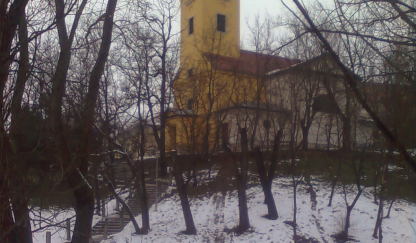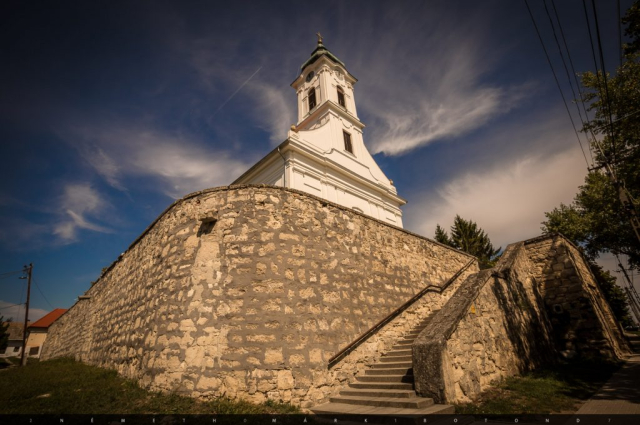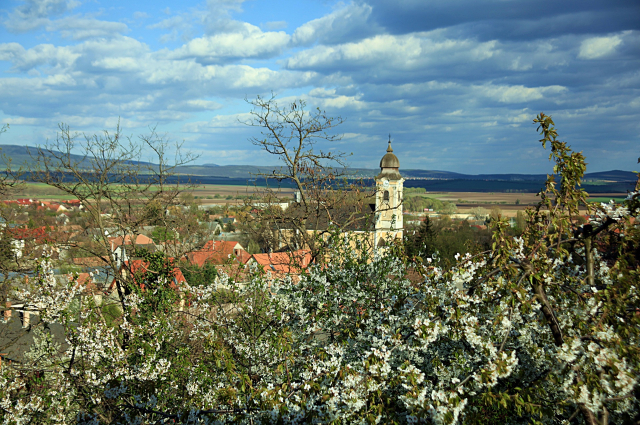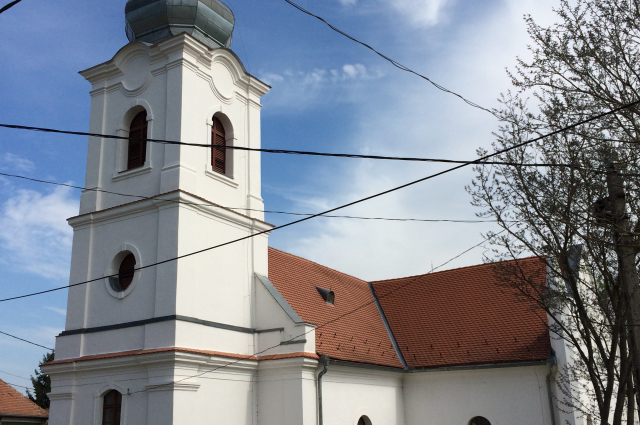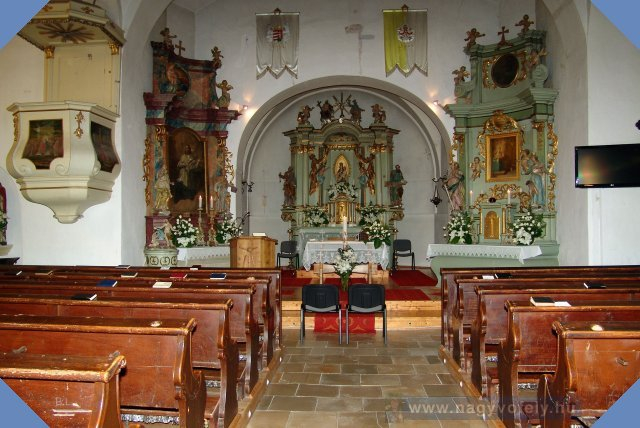
Church in the name of the Virgin Mary
The settlement of Torbágy was completely depopulated – similarly to the surrounding villages – during the Turkish occupation.
Once the occupiers had been displaced life began again with the settlement of people of German nationality, including the church community, which was founded again in 1714.
Around this time the landowner, artillery lieutenant Peter von Hermes, while preserving the Gothic sanctuary, ordered the construction of a new church using the remains of the medieval church. The completed building known as the Holy Name of the Blessed Virgin Mary was blessed by the Bishop of Veszprém Ádám Acsády in around 1730.
Nobleman Kristóf Promperger later built a tower on top, but his name is also associated with completion of the Baroque wooden altar representing the jewel of the church, and the right and left-sided altars named after St. Anthony of Padua and St. John of Nepomuk, which were verifiably standing at the time of the Canonical Visitation (bishop’s visit in 1747). The document drafted of the same church visit also makes mention of the Holy Cross relic of the church.
The building had fallen into quite a dilapidated condition by 1771 and yet the patrons who owned the settlement did not pay any attention to renovation for almost one hundred years, apart from the altar being restored in 1802. At the same time the painting that can be seen today was placed on the St. John of Nepomuk altar, where the statue used to stand.
Count Móric Sándor put an end to the undignified situation, fixed the roof and floors between 1854 and 1860, renovated the altars and the organ, and replaced the benches with new ones. However, the church had to wait until 1880-81 for full-scale renovation and redevelopment. The original nave was then extended with the transept, and the corridor with side entrances was built on both sides, leading to the transept, and the atrium in front of the oratory and main entrance.
The full-scale external restoration of the church was carried out in 1954, 1973 and 1983.
The Holy Trinity memorial column was erected in front of the entrance in 1739, following Hungary’s last plague epidemic significantly affecting the population of the village.
Apart from the Church in the Name of the Virgin Mary, three chapels (filial parishes) also formed part of the church community. The St. Anthony Chapel was located outside the village, above the current railway station, and the chapel definitely stood there in 1764 and was renovated in 1804. Like the memorial column, the Rosalia Chapel was built at the foot of the Katalin Hill in 1739, following the plague epidemic. The chapel achieved its definitive form in 1775 and was renovated in 1815 and 1950. The third one, the Our Lady Chapel, was built in 1865.
CHURCH IN THE NAME OF THE VIRGIN MARY
Biatorbágy, Dózsa György út 8.
GPS: 47.479194,18.830495
Similar results
Catholic church
2086 Tinnye, Bajcsy-Zsilinszky u. 2.The church dedicated to St. Anne and built in late Baroque style in 1797 is a significant relic of the over 700-year-old...
MoreVisitation of Our Lady Church
2091 Etyek, Hősök tere 17.In Etyek the Roman Catholic Church and Parish of the operation we have data since 1723rd Compared to the increased population of...
MoreBaroque parish church
Zsámbék, 2072 Petőfi Sándor utca 1.The single-nave Roman Catholic church with a single tower built in Baroque style stands on the corner of Magyar utca and Petőfi...
MoreReformed church
2073 Tök, Táncsics Mihály utcaThe Reformed church built on the area surrounded by retaining walls in the center of the village is one of Tök’s historical...
More